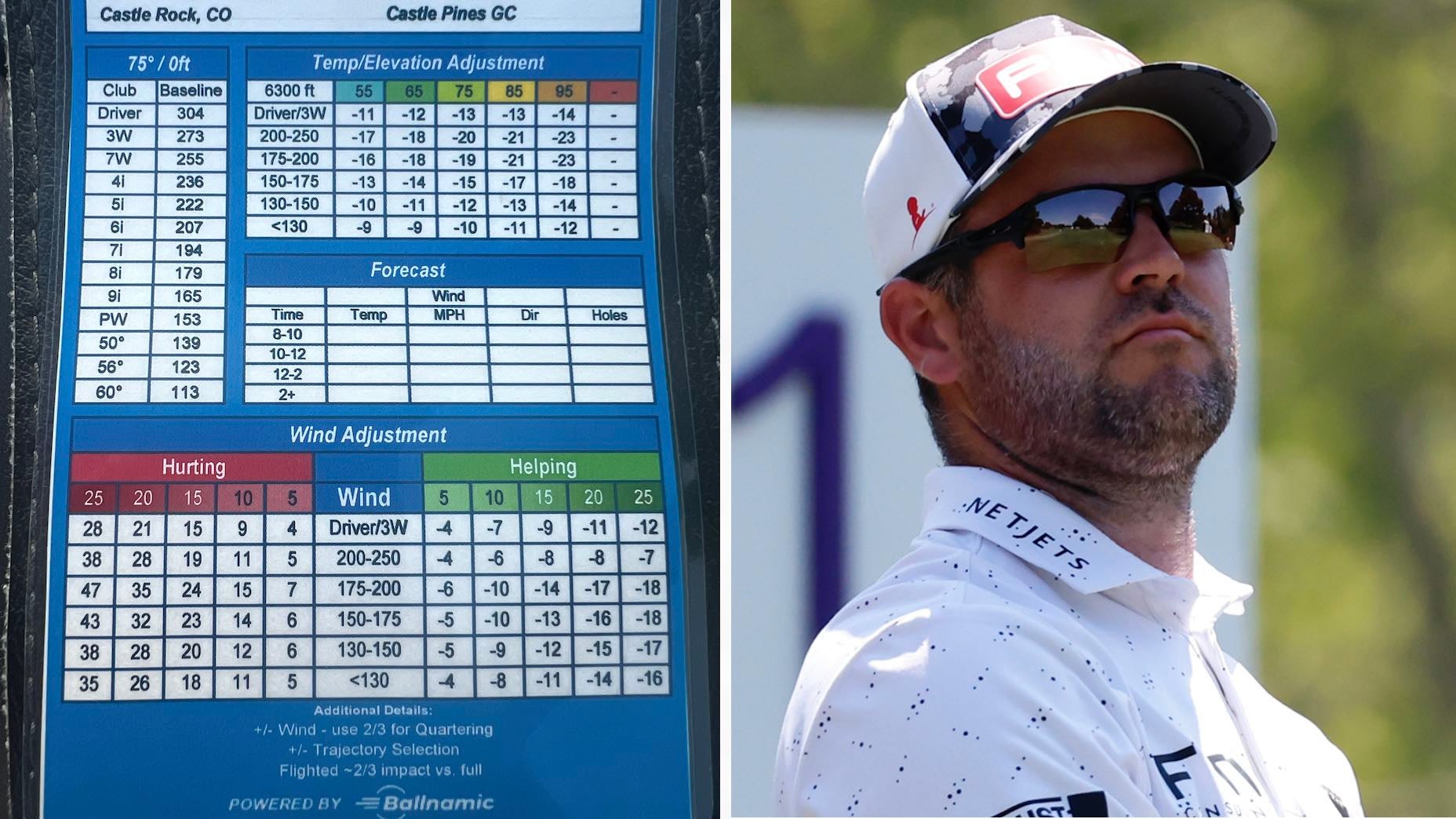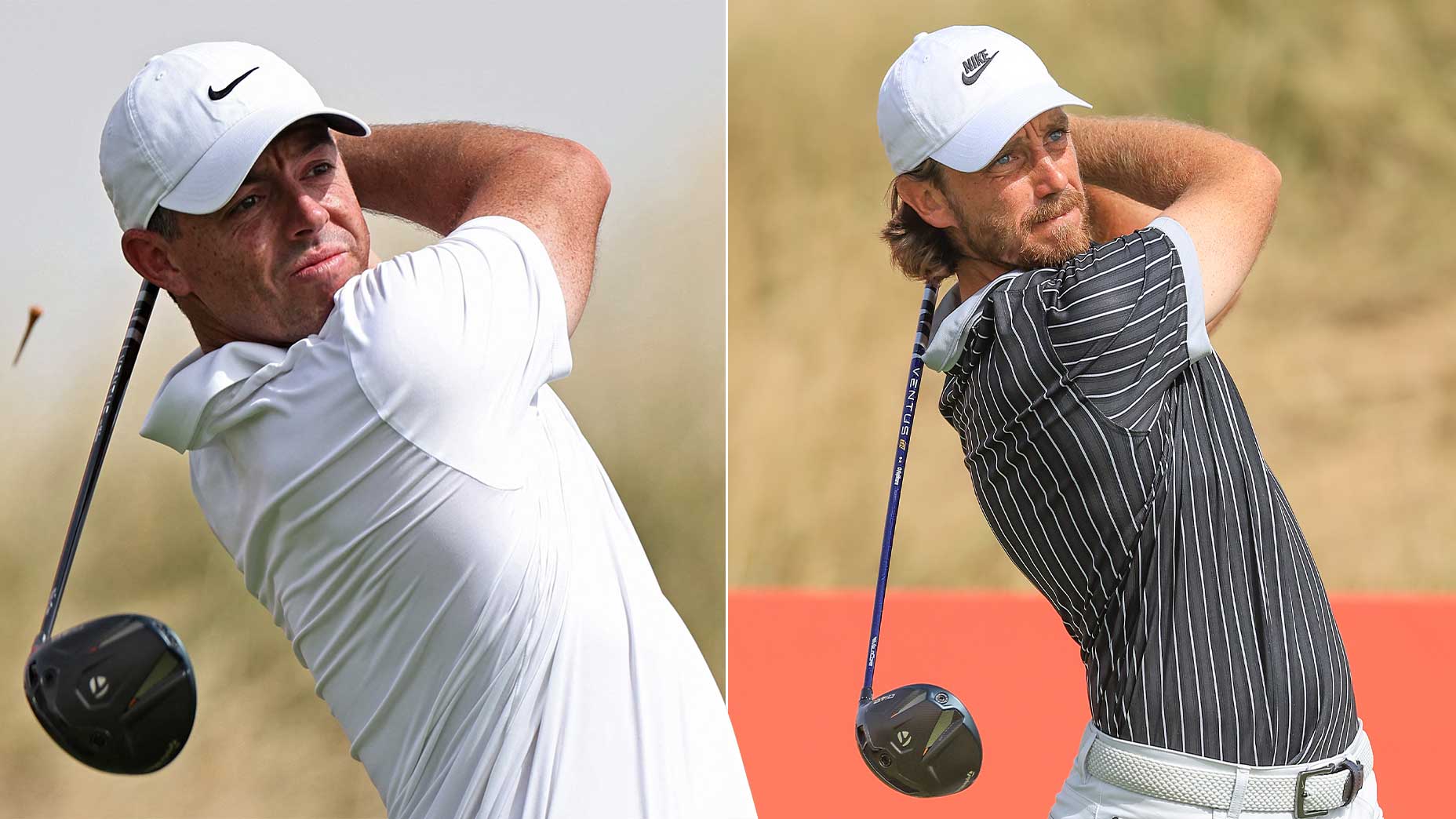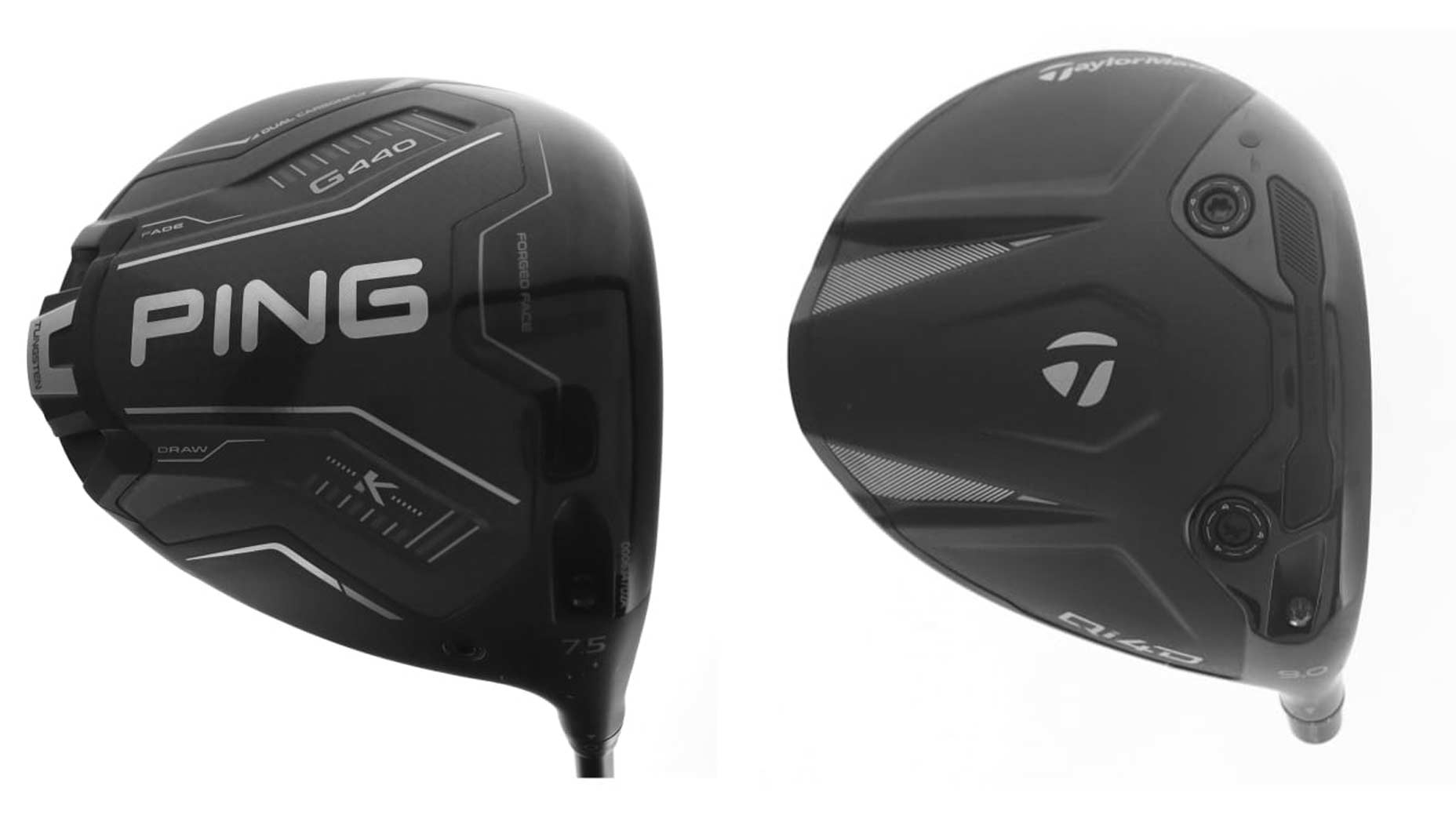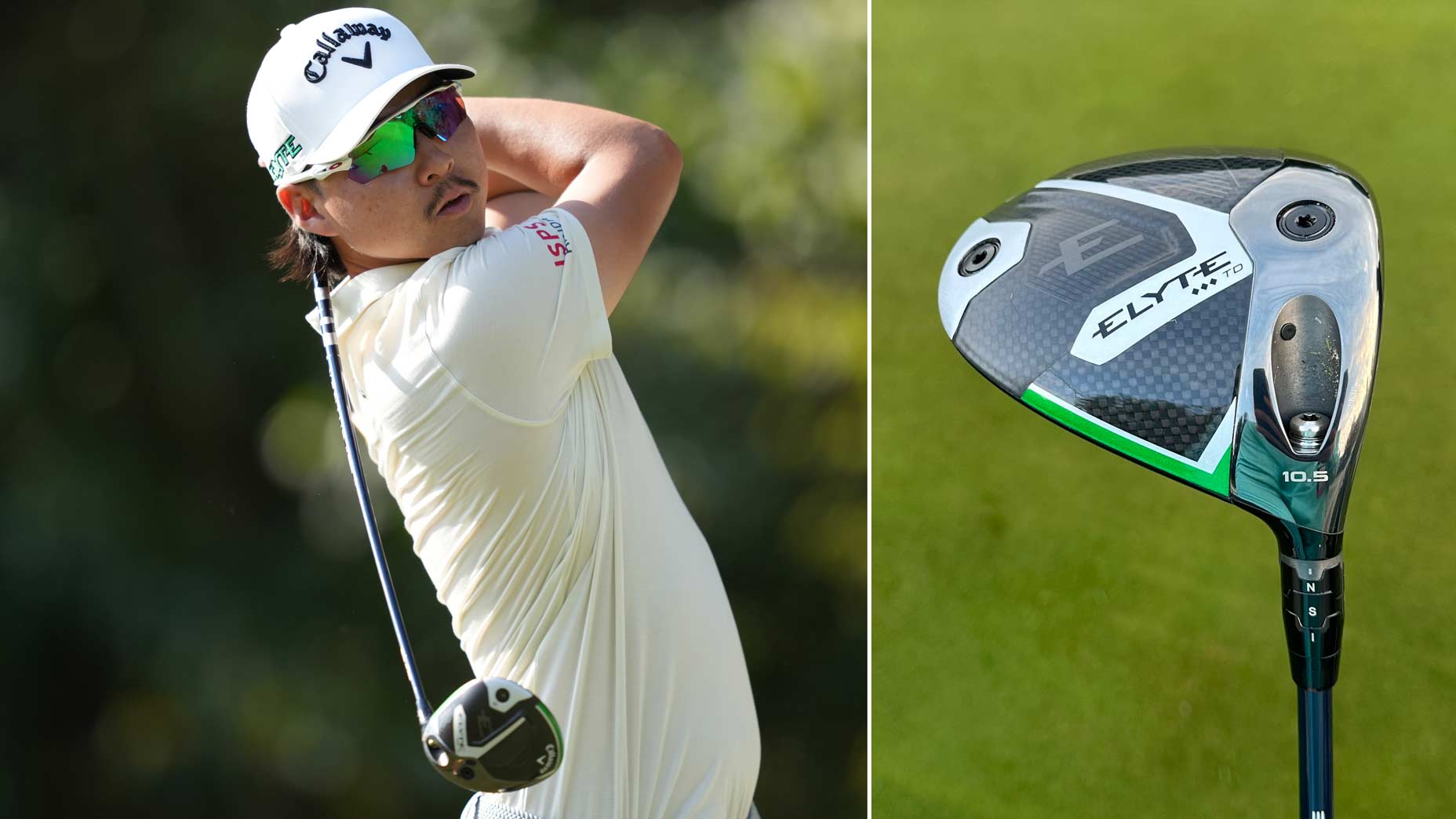The PGA Tour returns to Castle Pines, site of the BMW Championship, for the first time since 2006 following a two-decade run hosting The International. For a majority of the pros in this week’s field, it’s one of the few times they’ll have to get out the calculator and crunch the numbers before making a swing.
At roughly 6,200 feet above sea level, every golfer in the field will be blessed with more distance across the board, due to the lower air density. Pros aren’t sweating the challenge of tackling the longest course in PGA Tour history (8,130 yards) because Castle Pines would play 7,350 yards at sea level, which doesn’t seem all that daunting.
When it comes to calculating yardages? That’s a different story. Generic percentages offer a rough idea of how far the ball will carry at elevation, but those formulas generally fall short of the exacting standards pros require. Guesswork isn’t an option in the thin mountain air.
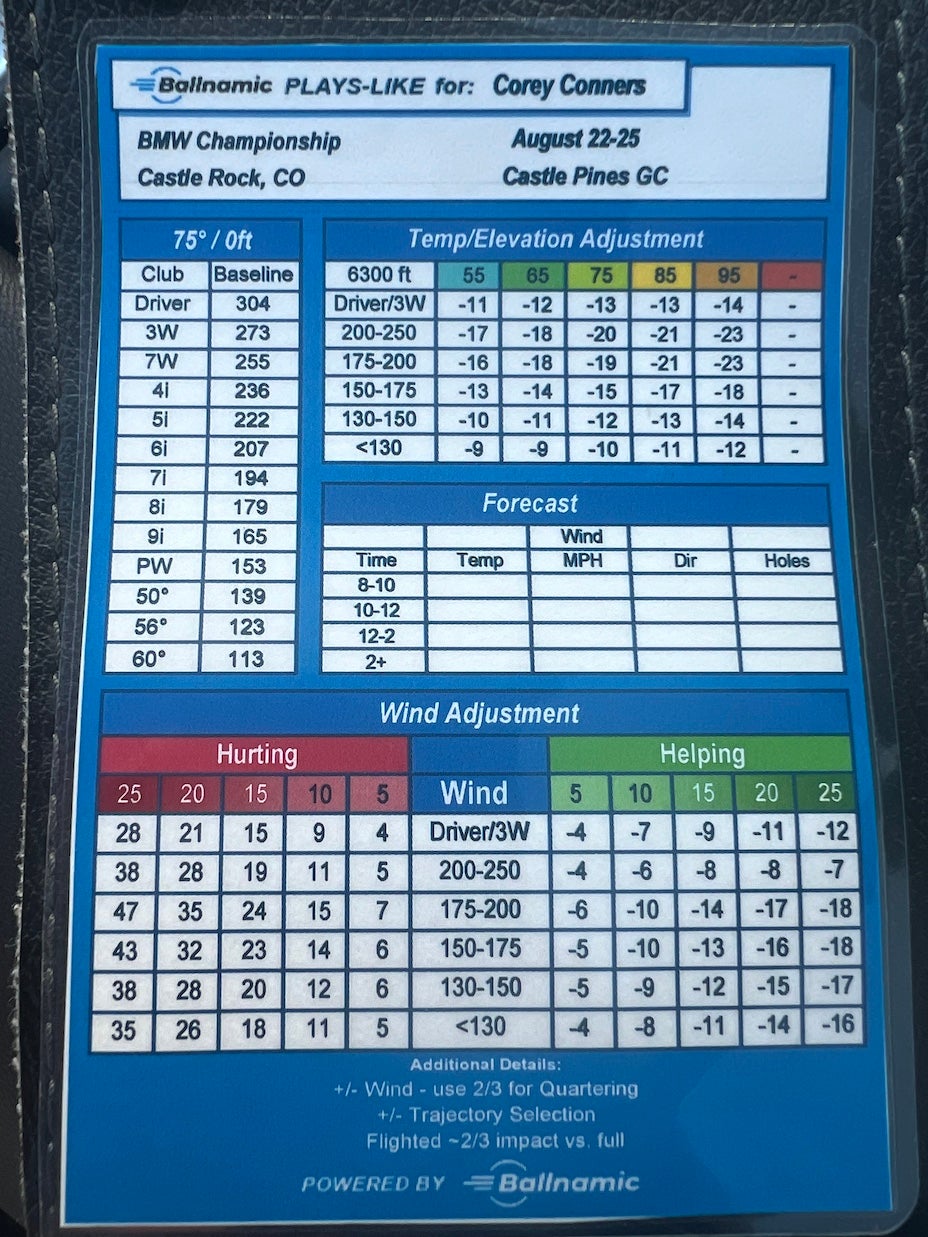
To help Ping staffers calculate their yardages, the tour team distributed personalized, laminated cards that take into account everything from wind speed and direction to trajectory and temperature to produce a precise “plays-like” number for every shot.
According to Marty Jertson, Ping’s VP of fitting and performance, the cards have been used in the past by former Ping staffer Jim Knous — who joined the equipment manufacturer as a fitting and education engineer earlier this year — and pros who teed it up in the Colorado Korn Ferry Tour event. But this week represents the first time they’ve offered the cheat sheet for Ping’s entire staff in the field at Castle Pines.
“The sheets are individual to each player, and it helps them in two ways,” Jertson told GOLF.com. “One, with their adjustments to the altitude. We change the temperature, too. So if you tee off at 75 degrees and finish at 90, the ball is going 4 yards further when you finish at that temperature. It’s much more precise than what players generally use, which is putting their rangefinder in meters or using a fixed percentage across the board.
“At altitude, because the air density is lower, the wind affects your shot — and this depends on the player and golf ball — roughly half as much as at sea level. So if you have a 10 mph hurting wind at sea level, if you hit a high, soft trajectory it could hurt your 7-iron about 25 yards. At Castle Pines, it might only hurt that shot with the same wind 15 yards. It’ll help players in a couple different ways.”
To create each sheet, Ping had pros hit a stock driver to capture ball speed, launch and spin, and then hit a stock 7-iron. The golf ball they were currently using was also factored into the formula. From there, the Gapping App in Ping Co-Pilot helped create player-specific carry yardages at Castle Pines’ elevation based on their personalized numbers.
How Ping’s Marty Jertson turned into a rockstar in the gear spaceBy: Jonathan Wall
“This gives the golfer a plays-like number for a bunch of different distances,” Jertson said. “They’re very individual for the player. For example, Corey Conners has very low spin with his driver but is our highest spinning on the irons. Those are things we can calculate.”
While it’s still unclear who will rely on the cards once the tournament begins, Jertson and Ping Tour rep Kenton Oates confirmed Conners is the most likely to employ it after vetting the numbers during recent practice rounds.
“Corey told me the sheet was spot-on and perfect,” Jertson said. ” He’s been using it in the practice rounds and really liked it. And the player doesn’t even need to carry it around; the caddie can and it’ll just make things a little more precise. I’ve actually used it on the playing side and the caddie side as well. It’s the equivalent of Aim Point, but for wind.”
Of all the features the card possesses, Jertson’s quick to highlight the wind chart at the bottom that takes “helping” (downwind) and “hurting” (into the wind) into account. The first iteration Jertson created had simulations with numbers for every different wind condition, yardage and position around the clock. But it’s difficult to tote around a giant binder with a myriad of numbers and make quick calculations on the course.
Once Jertson was able to distill the wind direction numbers into a simplified version, he added distance zones and the ability to account for quartering winds and different trajectories for a more fulsome picture.
For the moment, the laminated cards remain a Tour option, but Jerston hinted that could be changing in the future.
“We’re working on it,” said Jertson. “We want to be able to pass this to the people. What I’ve enjoyed is getting down to that one plays-like number in my head. I’ve factored in the wind, temperature and elevation — and I have 178 yards to the hole. I want to know it’s playing like 197 after factoring everything in. That’s the one number in my head. It just helps you as a golfer, especially as a tournament golfer.”
Want to overhaul your bag for 2024? Find a fitting location near you at True Spec Golf.
